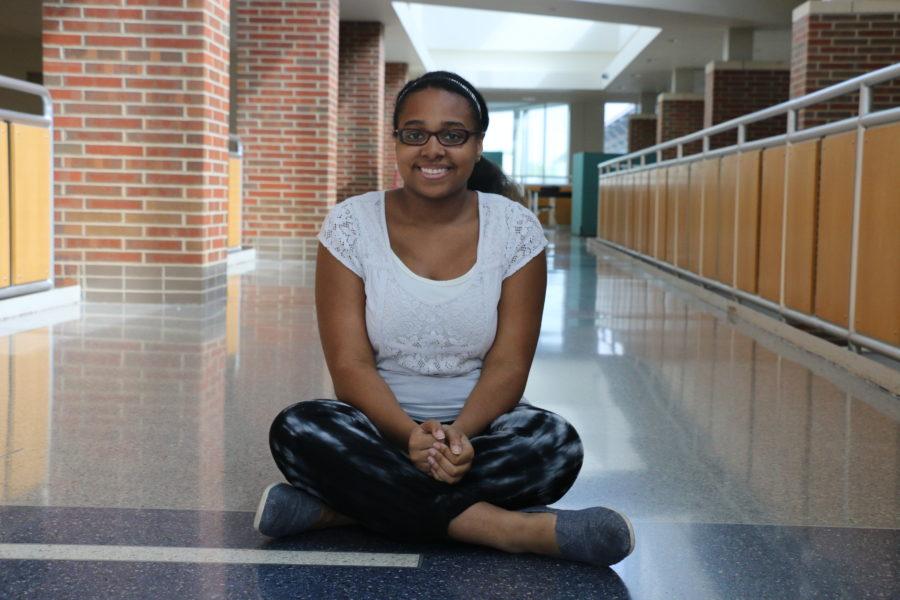 On April 7, I was gleefully watching one of my favorite shows, “Sleepy Hollow.” This show chronicles the story of a modern-day Ichabod Crane and his journeys with the supernatural. The main character, Abbie Mills, played by Nicole Beharie, crosses paths with him by fate. The two become partners and fight off supernatural beasts. This show appealed to me because a woman of color was the main character on the show.
On April 7, I was gleefully watching one of my favorite shows, “Sleepy Hollow.” This show chronicles the story of a modern-day Ichabod Crane and his journeys with the supernatural. The main character, Abbie Mills, played by Nicole Beharie, crosses paths with him by fate. The two become partners and fight off supernatural beasts. This show appealed to me because a woman of color was the main character on the show.
As I was watching the season three finale, someone had to sacrifice his or her eternal soul for the sake of humanity. Automatically, I thought Ichabod should because he was the person putting Abbie’s life in danger. However, in the end, Abbie sacrificed herself, and she died. “Sleepy Hollow” fans took to Twitter, expressing their rage over her death. As a fan, I was obviously upset, but also, as a person of color, I could see the deeper meaning behind her death.
Abbie Mills’s story is not unique; increasingly, characters of color are being erased from mainstream media. For many years, people of color have not been represented equally in the media. According to a February 2016 study conducted by the University of South Carolina, out of 138 cable stories, 74 percent have no African-American or Asian-American characters. This statistic is not surprising to me, and shows like “Sleepy Hollow” are constantly reinforcing these numbers.
Erasure is the complete disappearance of people of color. It is associated with the concept of “whitewashing,” casting non-people-of- color in roles that are not representative of the original characters.
With the disappearance of people of color, they are often used as “helpers” to the main white character. For instance, Abbie Mills basically died for Ichabod Crane when he could have been a little more chivalrous and sacrificed himself for her. The stereotypes of the person of color being an assistant or sidekick seemed to be diminished in this show, as Abbie and her sister worked together with Ichabod Crane and other characters. How could this be an example of erasure? Well, she was initially the main character in the story, and her story ended with her dying for someone who could’ve easily done it himself. By her “helping” Ichabod, she was erased from the show of which she was the main character.
This isn’t uncommon for Abbie to do. When the show took its mid-season break, she sacrificed herself again to save her sister and Ichabod. So, she was considered a hero, but to what extent? No one ever sacrificed their life for her and if they did they would have been hesitant. The ultimate question should be: Was Abbie Mills simply put on this show just to fulfill some diversity quota or did she have a larger purpose?
Some people have argued that she’s a fictional character, and she doesn’t have a certain color. But they are sadly mistaken. There are certainly scores of young black girls who look up to Abbie Mills and her sister. Their characters don’t fall into the traditional stereotypes portrayed by the mainstream media of black women and the black experience. Erasing Abbie completely from the show creates a void that cannot simply be filled with another white character.
I am hopeful that the casting crew will add another person of color to the cast in order to make up for Abbie’s loss. If they decide to not pursue other actors of color, they are continuing the cycle of erasure and are creating unrealistic portrayals of everyday life. In the world today, people are more diverse, and the refusal of the creators to accept that truth baffles me.
Ultimately, there is an unspoken war waged on characters of color. I encourage people to try shows with a significant minority presence and to notice the trends of people of color in television. Historically, people of color have been purposely kept out of the media, and now the difference is there’s just an “excuse.”
The views in this column do not necessarily reflect the views of the HiLite staff. Reach Jordyn Blakey at jblakey@hilite.org.

































![AI in films like "The Brutalist" is convenient, but shouldn’t take priority [opinion]](https://hilite.org/wp-content/uploads/2025/02/catherine-cover-1200x471.jpg)









































![Review: “The Immortal Soul Salvage Yard:” A criminally underrated poetry collection [MUSE]](https://hilite.org/wp-content/uploads/2025/03/71cju6TvqmL._AC_UF10001000_QL80_.jpg)
![Review: "Dog Man" is Unapologetically Chaotic [MUSE]](https://hilite.org/wp-content/uploads/2025/03/dogman-1200x700.jpg)
![Review: "Ne Zha 2": The WeChat family reunion I didn’t know I needed [MUSE]](https://hilite.org/wp-content/uploads/2025/03/unnamed-4.png)
![Review in Print: Maripaz Villar brings a delightfully unique style to the world of WEBTOON [MUSE]](https://hilite.org/wp-content/uploads/2023/12/maripazcover-1200x960.jpg)
![Review: “The Sword of Kaigen” is a masterpiece [MUSE]](https://hilite.org/wp-content/uploads/2023/11/Screenshot-2023-11-26-201051.png)
![Review: Gateron Oil Kings, great linear switches, okay price [MUSE]](https://hilite.org/wp-content/uploads/2023/11/Screenshot-2023-11-26-200553.png)
![Review: “A Haunting in Venice” is a significant improvement from other Agatha Christie adaptations [MUSE]](https://hilite.org/wp-content/uploads/2023/11/e7ee2938a6d422669771bce6d8088521.jpg)
![Review: A Thanksgiving story from elementary school, still just as interesting [MUSE]](https://hilite.org/wp-content/uploads/2023/11/Screenshot-2023-11-26-195514-987x1200.png)
![Review: "When I Fly Towards You", cute, uplifting youth drama [MUSE]](https://hilite.org/wp-content/uploads/2023/09/When-I-Fly-Towards-You-Chinese-drama.png)
![Postcards from Muse: Hawaii Travel Diary [MUSE]](https://hilite.org/wp-content/uploads/2023/09/My-project-1-1200x1200.jpg)
![Review: "Ladybug & Cat Noir: The Movie," departure from original show [MUSE]](https://hilite.org/wp-content/uploads/2023/09/Ladybug__Cat_Noir_-_The_Movie_poster.jpg)
![Review in Print: "Hidden Love" is the cute, uplifting drama everyone needs [MUSE]](https://hilite.org/wp-content/uploads/2023/09/hiddenlovecover-e1693597208225-1030x1200.png)
![Review in Print: "Heartstopper" is the heartwarming queer romance we all need [MUSE]](https://hilite.org/wp-content/uploads/2023/08/museheartstoppercover-1200x654.png)




